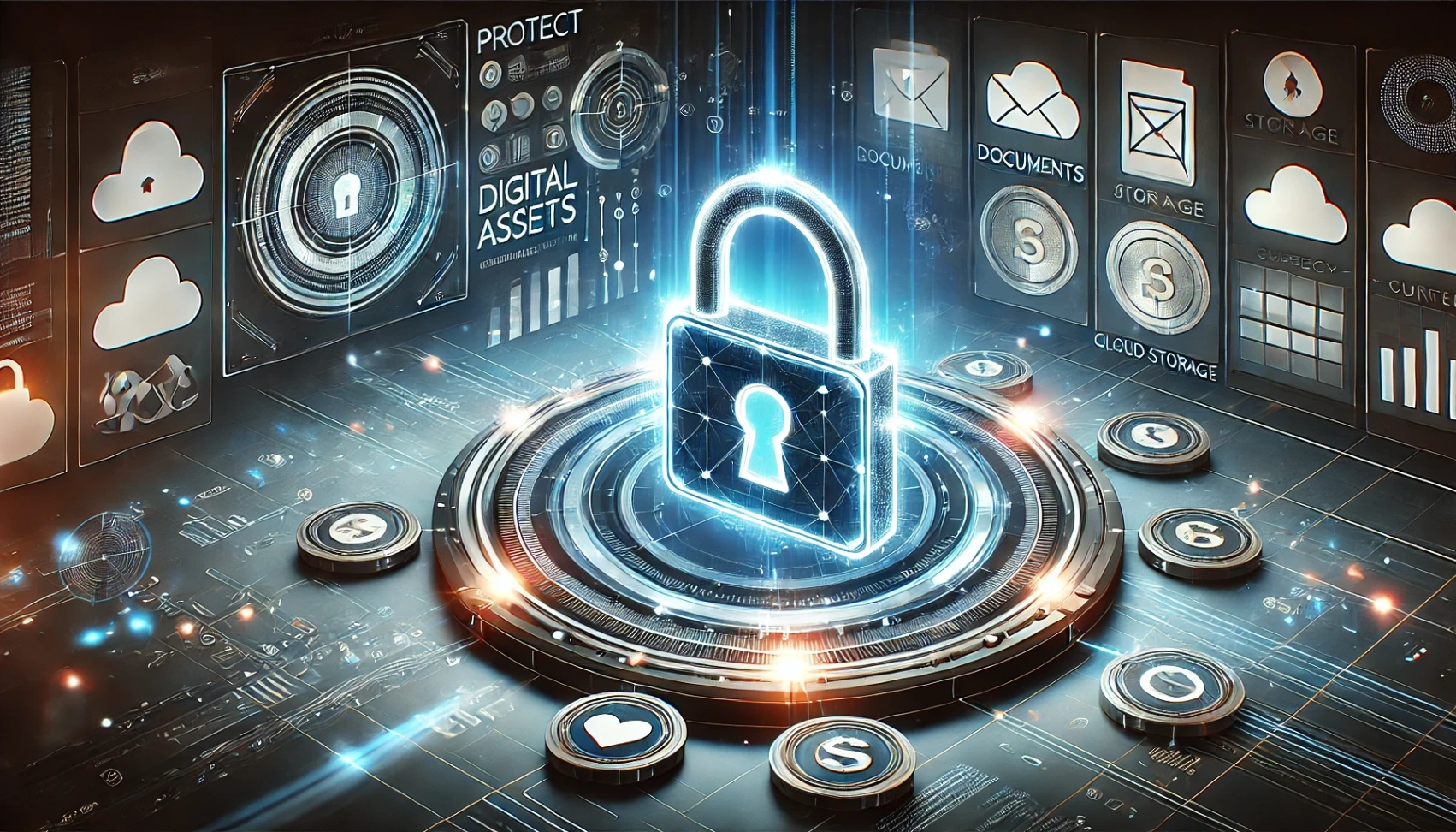Protecting your digital assets is essential in the rapidly growing cryptocurrency space, where security risks are widespread.
This article will cover key topics such as secure password practices, safe wallet usage, phishing scams, and effective backup strategies.
By understanding these practices and avoiding common crypto mistakes, you can confidently secure your investments and minimize risks.
Understanding Crypto Security
Understanding how crypto assets work is key to securing and managing your investments. Here are seven fundamental aspects of cryptocurrencies:
- Blockchain Technology: A decentralized ledger records and verifies all transactions transparently.
- Decentralization: No central authority; a global network validates transactions.
- Cryptography: Public and private keys secure transactions and protect user data.
- Wallets: Tools to store private keys and manage digital assets, available as software or hardware.
- Transaction Validation: Methods like mining or proof-of-stake confirm and secure transactions.
- Smart Contracts: Automated contracts execute predefined actions without intermediaries.
- Supply and Demand: Crypto value depends on market dynamics, driven by scarcity and usage.
Why Security Is Critical in Crypto
Security in crypto is crucial because of the high risks involved. Losing access or falling for scams can result in permanent loss of funds.
Here are five key reasons why security matters:
- Irreversible Transactions: Mistakes or fraud cannot be undone.
- No Central Authority: You are fully responsible for protecting your assets.
- Hacker Targets: Crypto is valuable and often attacked.
- Private Key Loss: Losing keys means losing access to your funds.
- Scams Are Common: Phishing and fake investment schemes are everywhere.
Common Crypto Mistakes and How to Avoid Them
Managing cryptocurrencies requires careful attention to security and best practices.
Many users make common mistakes that lead to financial loss, but most of these errors are avoidable.
Here are the common crypto mistakes and how to avoid them:
Using Weak Passwords
Weak passwords put your crypto at risk. Strong, unique passwords are key to protecting your assets. Here’s why and how to avoid this issue:
- Easily Guessable: Weak passwords like “123456” or “password” are easy for hackers to crack.
- Reusing Passwords: Using the same password across multiple accounts increases the risk of compromise.
- Brute Force Attacks: Short and simple passwords are more susceptible to automated guessing attacks.
- Best Practices for Strong Passwords: Create passwords with a mix of uppercase, lowercase, numbers, and symbols.
- Use a Password Manager: Store and manage complex passwords securely without memorizing them.
Best Practices for Regularly Updating Passwords
- Set a Schedule: To minimize risk, update passwords every 3-6 months.
- Use Strong Formats: Create passwords with a mix of uppercase, lowercase, numbers, and symbols.
- Avoid Reusing Old Passwords: Always generate a new password for each update.
- Leverage Password Managers: Use a trusted password manager to create, store, and manage secure passwords.
- Update Compromised Accounts Immediately: Change passwords immediately if there’s any sign of a breach.
Neglecting Two-Factor Authentication (2FA)
Two-factor authentication (2FA) adds extra security to your accounts. Here’s how to set it up:
- Choose a 2FA App: Download a trusted app like Google Authenticator or Authy.
- Log In to Your Account: Go to your account’s security settings.
- Locate the 2FA Option: Find and select the option to enable 2FA.
- Scan the QR Code: Use the 2FA app to scan the QR code or manually enter the key.
- Save Backup Codes: Write down the backup codes and store them securely.
- Verify the Setup: Enter the code from the app to confirm activation.
- Enable and Test: Turn on 2FA and test it by logging in again.
Benefits of Using Authenticator Apps Over SMS-based 2FA
- Enhanced Security: Protects against SIM-swapping and phone number spoofing attacks.
- Offline Access: Codes are generated without an internet or cellular connection.
- Faster Code Generation: Instant code generation without waiting for SMS delays.
- No Interception Risk: Codes cannot be intercepted like SMS messages.
- Multiple Account Management: Easily manage 2FA for several accounts in one app.

Over-reliance on Centralized Exchanges
Relying too much on centralized exchanges can expose your assets to unnecessary risks. Here’s what you need to know:
- Security Risks: Exchanges are frequent hacking targets.
- No Private Key Control: The exchange holds your private keys, not you.
- Exchange Failures: Platforms can shut down, freeze assets, or go bankrupt.
- Regulatory Issues: Government actions may restrict access to funds.
- Self-Custody Benefits: Personal wallets give you complete control of your assets.
- Decentralized Platforms: DEXs allow secure, direct trading without intermediaries.
- Risk Mitigation: Use exchanges for trading only, then withdraw funds to secure wallets.
Ignoring Software Updates
Ignoring software updates risks your crypto assets. Updates fix vulnerabilities, improve security, and ensure compatibility. Here’s why they matter:
- Security Risks: Outdated software can be exploited by hackers.
- Bug Fixes: Updates resolve issues that may disrupt transactions.
- Compatibility Problems: Older versions may not support new blockchain features.
- Feature Enhancements: Updates improve performance and security.
- Safe Downloads: Always update from official sources to avoid fake versions.
- Update Alerts: Enable notifications to stay informed about new updates.
- Regular Checks: Ensure your software is always up to date.
Tips for Verifying Legitimate Sources for Updates
- Use Official Websites: Always download updates directly from the software’s official website or app store.
- Check URLs: Verify that the website’s URL is correct and uses HTTPS for security.
- Follow Trusted Links: Access download links from the official project or team.
- Verify Social Media Announcements: Confirm updates through the software’s verified social media or community channels.
- Enable Automatic Updates: Use the app’s built-in update feature to minimize the risk of fake downloads.
Overlooking Backup and Recovery Plans
Overlooking backup plans risks permanent loss of crypto assets. Here’s why they matter and how to set them up:
- Permanent Loss Risks: Losing access to your private keys or recovery phrases means losing your assets forever.
- Importance of Recovery Phrases: Wallet recovery phrases are the only way to restore access if your device is lost or damaged.
- Secure Backup Storage: Store backups in multiple secure, offline locations like safes or lockboxes.
- Test Recovery Procedures: Regularly test your backups to ensure they work as expected in an emergency.
- Avoid Digital Storage: Don’t store recovery phrases on cloud services or devices prone to hacking.
Falling for Phishing Scams
Phishing scams trick users into sharing sensitive crypto information. Here’s how they work and how to avoid them:
- Fake Emails and Websites: Scammers create convincing replicas of legitimate emails and websites to steal login credentials.
- Social Engineering: Hackers use tactics to manipulate victims into providing sensitive information.
- Verify Links and URLs: Always double-check URLs for authenticity before entering credentials.
- Avoid Clicking on Unknown Links: Don’t click on links in unsolicited emails or messages.
- Use Anti-Phishing Tools: Enable browser extensions or features that flag suspicious websites.
Carelessness in Public Settings
Carelessness in public settings can put your crypto assets at risk. Public networks and shared devices are significant threats. Here’s why and how to stay secure:
- Public Wi-Fi Risks: Hackers can intercept your data on unsecured networks.
- Shared Devices: Using public devices risks saving or exposing your credentials.
- Use a VPN: Encrypt your connection to stay secure on public networks.
- Avoid Sensitive Access: Wait to access wallets or exchanges until they are on a secure network.
- Be Aware in Public: Avoid discussing or showing crypto accounts publicly.
To Wrap Up
Protecting crypto assets requires vigilance, education, and best security practices.
You can significantly reduce risks and safeguard your investments by avoiding common mistakes and taking proactive steps.
Start implementing these strategies today to secure your digital future with confidence.


